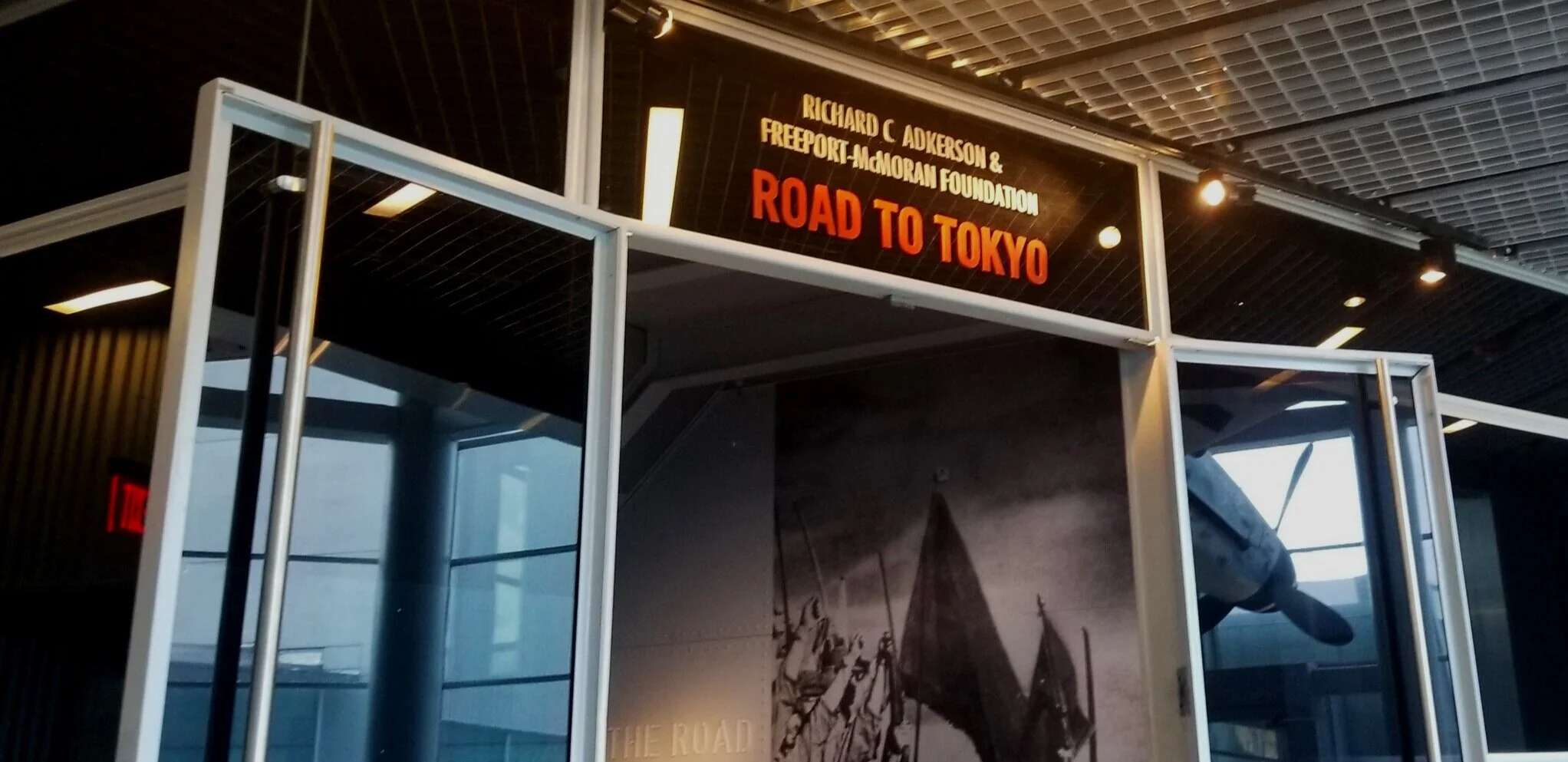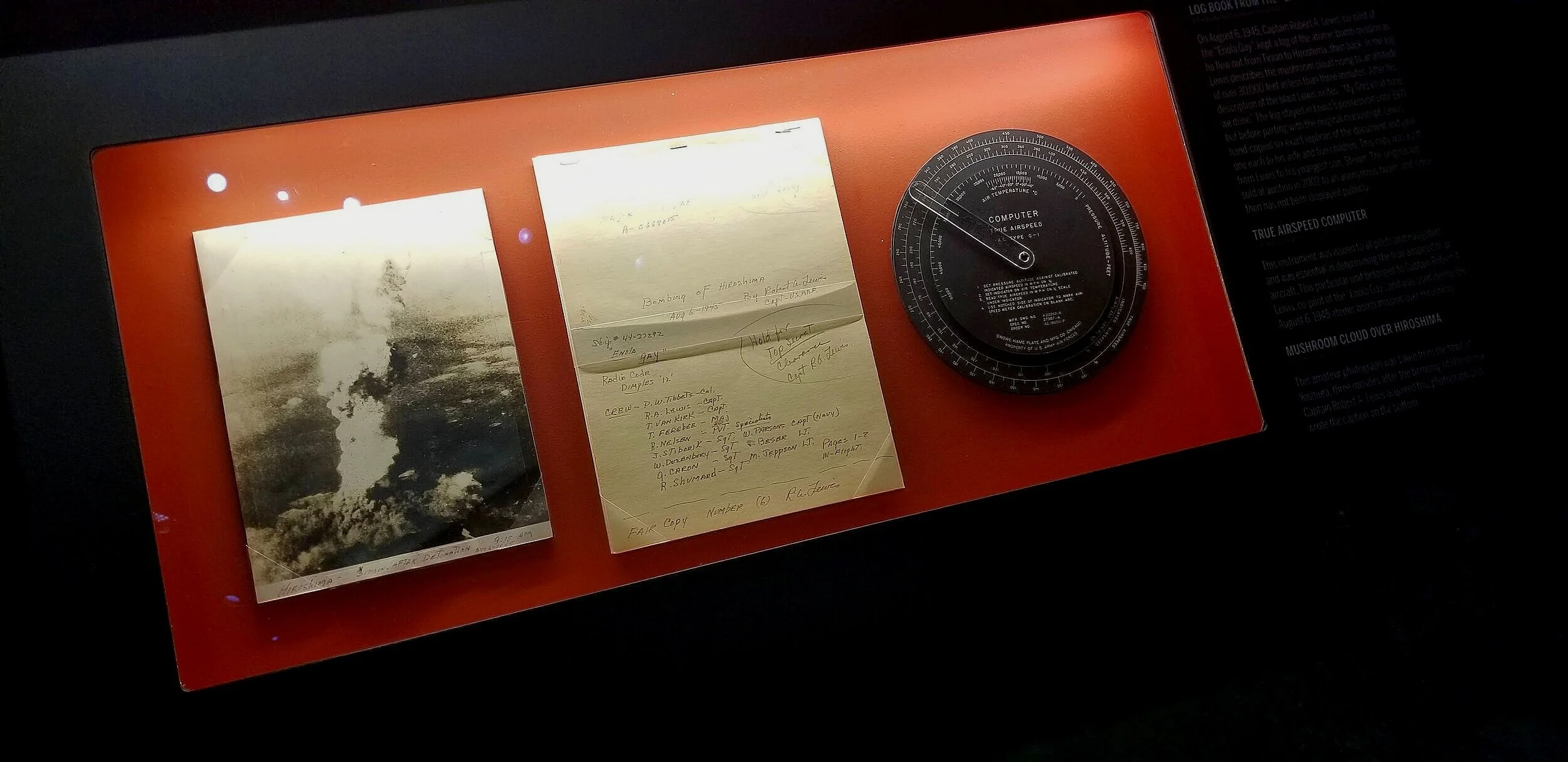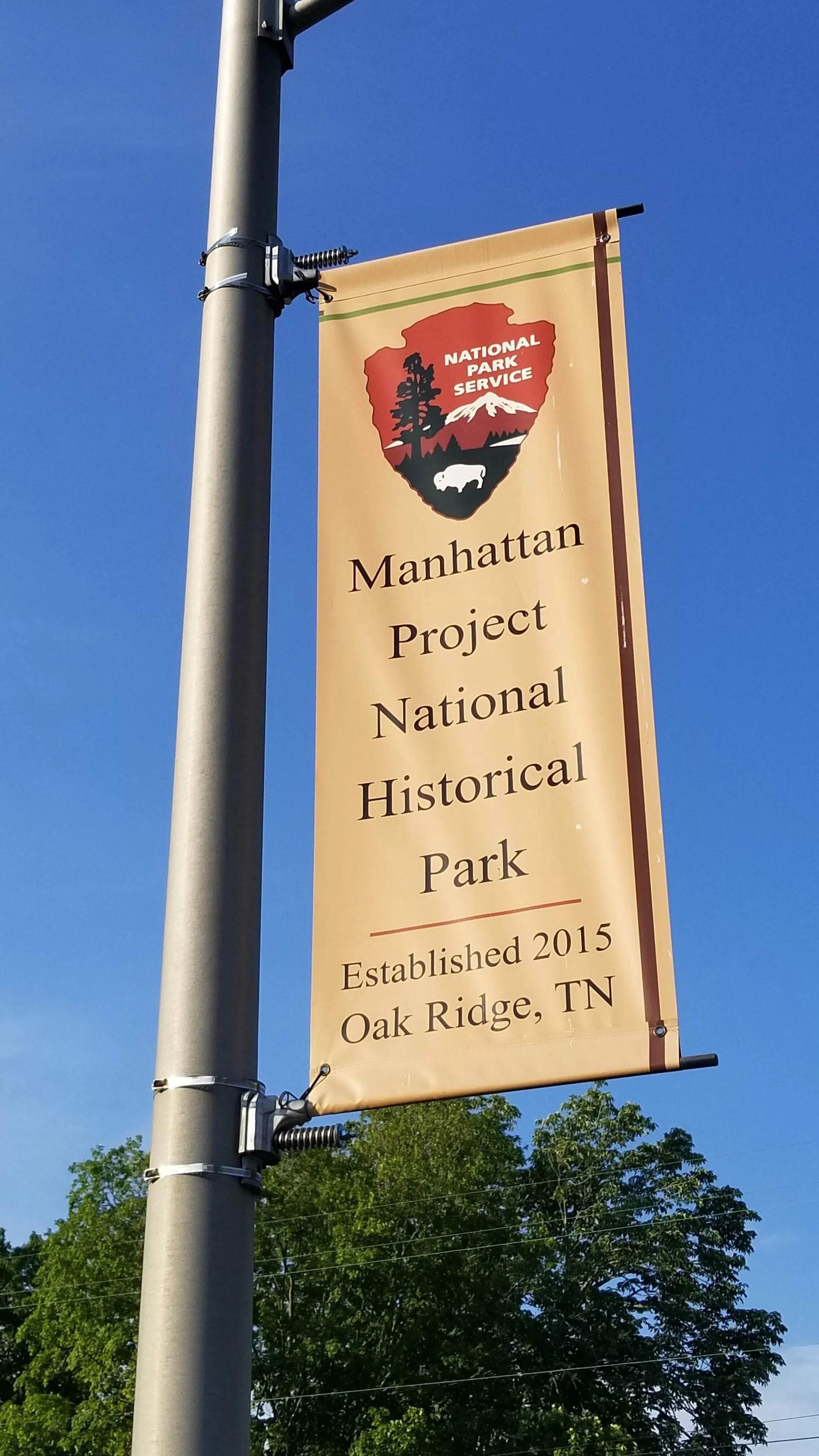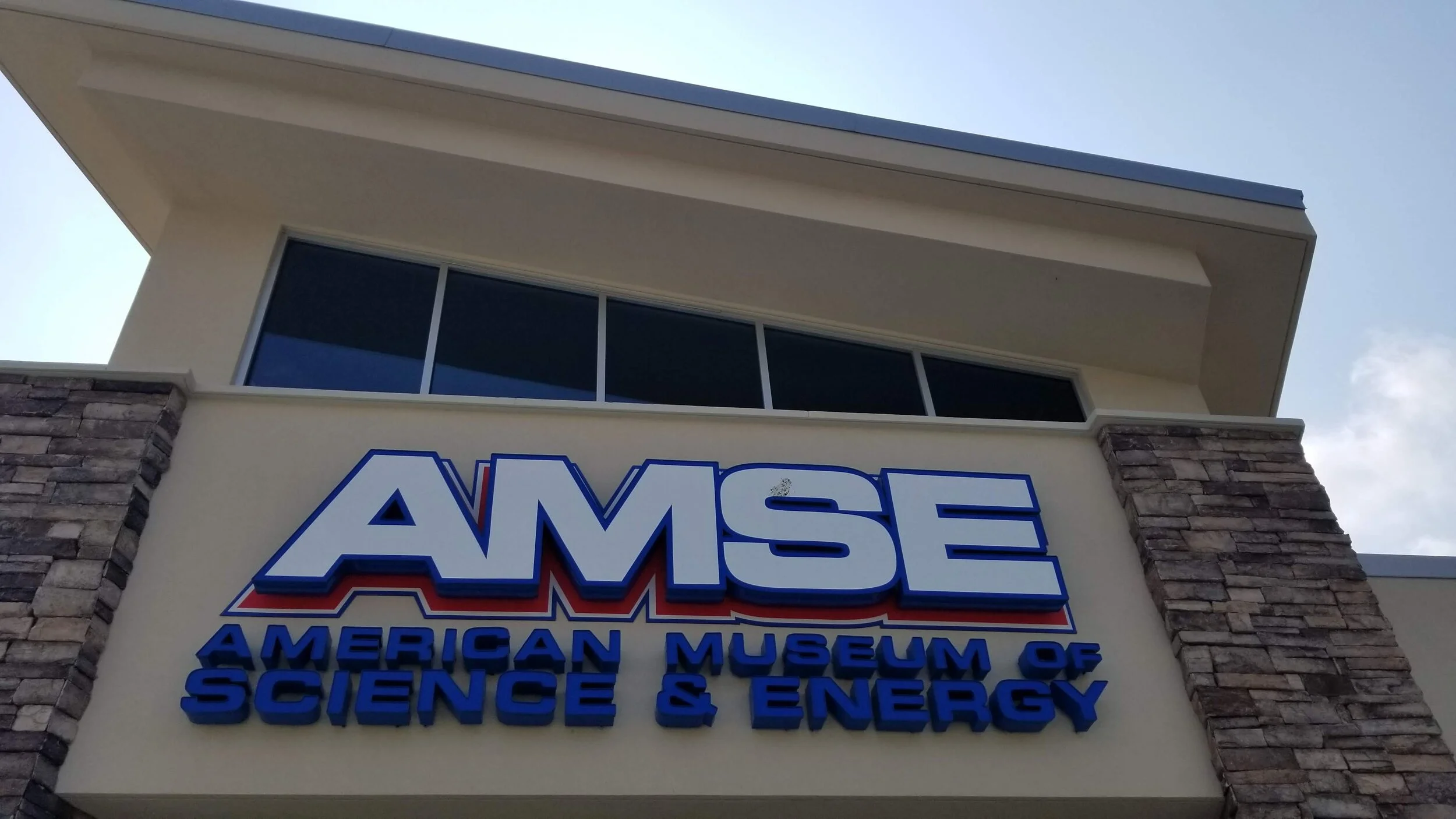Top Secret Road Trip - New Orleans, Oak Ridge and Washington, DC
One event on August 6, 1945 altered the course of history in a way few people at the time could imagine. The United States bombing of Hiroshima, Japan ushered in the era of atomic weapons, a milestone still heavily debated today. The secrecy surrounding the building of the atomic bomb was unprecedented. Today, in two cities more than a thousand miles apart, along with a city just a few miles from my home, these secrets of World War II are revealed. Here’s a “Top Secret” Road Trip focused on the ushering in of the Atomic Age. .
The National World War II Museum is one of the top attractions in New Orleans.
National World War II Museum
Let’s begin the journey in New Orleans, Louisiana. Just beyond the festivities of the French Quarter, a sleek set of buildings rises above Magazine Street in the city’s Warehouse District. This is the National World War II Museum (formerly known as The National D-Day Museum), a sprawling complex dedicated to telling the story of the world’s deadliest conflict, what lead to it, how it played out and how it shaped the decades that followed.
The Road to Tokyo and The Road to Berlin are two of the major collections of exhibits in the National World War II Museum in New Orleans.
You can easily spend hours in this museum and still find yourself noticing new things on a subsequent visit. There’s even a new building going up that will focus on the liberation efforts at the end of the war and how the war shaped the following decades. The Road to Tokyo and the Road to Berlin feature interactive stories where you can follow a real person’s journey made possible through a card you receive in the train cars at the museum’s main entrance.
Exhibits revolving around D-Day make up the oldest part of the museum, but there’s much more to see. You’ll also find a look at American industry’s response to the war effort. This includes a small, but information packed exhibit telling the story of the Manhattan Project. This top-secret project played out mainly in communities in Washington state, New Mexico and in East Tennessee. Out of this massive undertaking, hundreds of scientists along with thousands of workers successfully created an atomic weapon. (More on the Tennessee sites a bit later in this post).
A small selection of artifacts and documents sit at the end of the Road to Tokyo exhibits in the WWII Museum. One piece is an airspeed computer. Beside it is a handwritten copy of Captain Robert A. Lewis’ log for the Enola Gay flight to Hiroshima and a photograph taken shortly after the bombing that shows the mushroom cloud over Hiroshima. (The picture was donated to Lewis and later the museum). Describing what he saw minutes after dropping the bomb, Captain Lewis said “My God what have we done?”
Captain Robert A. Lewis’ log for the Enola Gay flight over Hiroshima is encased near the end of the Road to Tokyo exhibit in the National World War II Museum in New Orleans.
Just days after Hiroshima, another bomb was dropped on the city of Nagasaki. Two large photographs of Hiroshima and Nagasaki in the aftermath sit high above the room near the end of The Road to Tokyo exhibits. The simplicity and somber nature of what you find here makes it all that more powerful, especially when you include the flight record of Colonel Paul W. Tibbets, Jr. While it was probably the most significant flight of the war (and perhaps the 20th Century) only the date and time of the flight was officially recorded in the log.
Pictures of the destruction at Hiroshima and Nagasaki lie near the end of the Road to Tokyo portion of the National World War II Museum.
Aviation buffs will be flying high with excitement in the US Freedom Pavilion (The Boeing Center), a part of the World War II Museum that reminded me of the Air & Space Museum in Washington, DC. A Boeing B-17 Flying Fortress, a General Motors TBM Avenger and other aircraft from the era “fly” high above you as you enter, but take the elevator up a few floors and you can get a look at them from above (along with an awesome view of the city). You can also check out “Voices of Courage”, an oral history of World War II told by the men and women who fought and learn more about the 473 World War II Medal of Honor recipients.
Several World War II era planes hang inside the US Freedom Pavilion (The Boeing Center) at the National World War II Museum in New Orleans.
Cap off a trip to the World War II Museum with the 4D experience, “Beyond All Boundaries.” This immersive film shows you how during the conflict, the boundaries of just about everything were pushed in efforts to fight and win the war. The special effects and narration by Tom Hanks make this an unforgettable experience overall.
For more information on operating hours and ticket prices visit nationalww2museum.org .
One of America’s newest National Parks has sites in Oak Ridge, Tennessee and two other cities.
Tennessee’s Secret City
Living just a few miles from Oak Ridge, Tennessee the impact of World War II on this part of the country is unmistakable. The city didn’t exist before the war. The government built the city in secret, and at one time some 70-thousand people lived and worked in “The Secret City” helping usher in the atomic age. Today, Oak Ridge’s history as part of the once super secret “Manhattan Project” spreads out across two counties with elements of the atomic significance still in play.
The Manhattan Project National Historic Park (one of seven National Park sites in East Tennessee) came into being just a few years ago and the quite non-traditional park continues to evolve in its scope and offerings. For starters, the park has sites in Tennessee, Washington and New Mexico, so don’t expect to “see it all” in one day.
As you drive along the Oak Ridge Turnpike and other streets in the city, you’ll see banners for the Manhattan Project N.P. These mostly signify the areas of town with significant sites to see like the Alexander Inn (or guest house) where many dignitaries like Enrico Fermi and Robert Oppenheimer stayed. The structure is now an Assisted Living facility, but there is an historical marker out front.
During the time of the Manhattan Project, the Alexander Guest House in Oak Ridge housed several notable scientists and dignitaries visiting “The Secret City.”
The Alexander Inn sits about a block or so away from Historic Jackson Square, an area that kind of serves as this planned city’s “downtown.” The Square was one of many shopping and dining areas located throughout Oak Ridge, designed to serve the people that lived there during its Manhattan Project days. Today, businesses like Razzelberry’s Ice Cream Lab and the Oak Ridge Playhouse continue the Square’s tradition of being a place to shop, dine and enjoy some entertainment.
The visitors center for the Manhattan Project NP sits inside the Children’s Museum of Oak Ridge. The museum is in a school decommissioned after the city’s federal status ended. Inside you’ll find several exhibits about the Manhattan Project and life in Oak Ridge during that time, but the museum itself goes well beyond those stories in providing a fun and educational experience for children, including a life-sized doll house.
A few miles away, the American Museum of Science and Energy tells the story of the Manhattan Project from both historical and scientific perspectives. Not long ago, the museum moved into a smaller, but much more modern and interactive space. From here (before the pandemic) you could catch bus tours taking you to several sites in the area all tied to the Manhattan Project. Two of them, the Y-12 National Security Complex and Oak Ridge National Labs still operate today as part of the Department of Energy. Tours also included a trip to the old K-25 site which is now home to the K-25 History Center. DOE tours require proof of U.S. Citizenship and a background check.
Around town in places like Melton Lake Park and at the Turnpike Gatehouse on the west side of the city you’ll find markers and sites that are part of the National Park and in the future more may be added. While it’s not officially a part of the Manhattan Project N.P. a landmark in Oak Ridge’s A.K. Bissell Park should be included as part of your visit. This 8,000 pound bronzed bell serves as a reminder of the peaceful relationship between Japan and the United States that developed after World War II. The International Friendship Bell came to the city when it was celebrating its 50th birthday. The park also has a commemorative walk which brings you the history of this 20th Century city.
The Enola Gay
Several years ago, my family and I visited the Steven F. Udvar-Hazy Center in northern Virginia, just outside Washington, D.C.. This part of the National Air and Space Museum (located at Dulles Airport) may be best known as the home of the Space Shuttle Discovery. And while being up close to a space shuttle was an unforgettable experience, a Boeing B-29 slightly elevated a few feet off the ground truly garnered my attention in a way the shuttle could not. This was the Enola Gay, the plane piloted by Colonel Paul W. Tibbets, Jr. and Captain Robert A. Lewis that dropped a payload that is credited with bringing the bloodiest conflict in history to an end, but also ushering in an unprecedented arms race and decades of debate over nuclear weapons.
More reasons for the Road Trip
While the historical aspects of visiting all of these places can put your mind into overdrive, there are plenty of things to divert your attention in each of these three cities. New Orleans of course boasts a laid back vibe where music, art and food come together to energize the soul. Oak Ridge sits between the Great Smoky Mountains and the Cumberland Plateau just minutes away from Knoxville. Oak Ridge regularly hosts championship rowing events along Melton Hill Lake and you will find miles and miles of hiking trails and greenways to enjoy too. Washington, DC, of course is home to countless cultural and historical sites along with all the things people expect in a thriving metropolis.




































